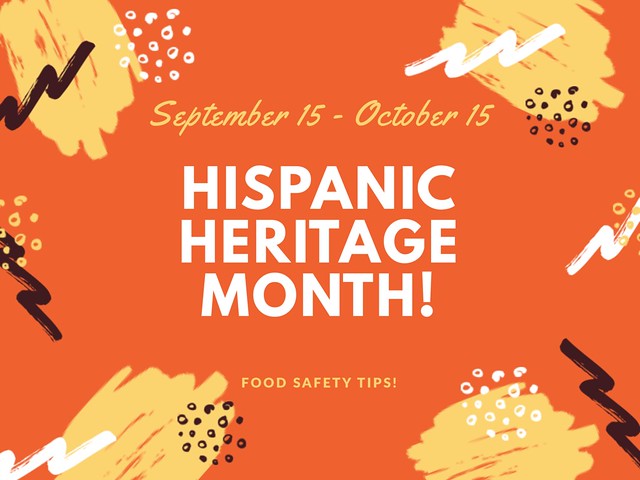
Every year during National Hispanic Heritage Month, we recognize the contributions made by Hispanic and Latino Americans to the United States. Approximately 50.5 million Hispanics live in the U.S., according to the U.S. Census Bureau (PDF, 1.5 MB).
Practicing Spanish, learning more about the life of Roberto Clemente or learning some salsa moves sounds like fun, right? Let’s add some delicious traditional foods with amazing aromas and flavors to get this fiesta started.
Many traditional dishes include meat, poultry or both as the main dish. It is common to wonder if the food is properly seasoned while preparing it, but have you ever wondered if the internal temperature is safe? Simply use a food thermometer to check if the carne asada, or grilled or shredded chicken is safe to eat. A recent study by USDA shows that 66 percent of participants did not use a food thermometer to check the internal temperature of their food. The only way to know if your food is safe to eat is by using a food thermometer to check the internal temperature. Color and touch are never an indication of doneness. In some cases, the meat or poultry may look done and the juices may run clear, but bacteria may still be present if the food has not reached the correct internal temperature. The USDA-recommended safe minimum internal temperatures are:
- Beef, Pork, Veal and Lamb:
Steaks, chops, roasts 145°F (allow to rest for at least 3 minutes) - Ground meats: 160°F
- Ham, fresh or smoked (uncooked): 145°F (allow to rest for at least 3 minutes)
- Fully Cooked Ham: (to reheat) Reheat cooked hams packaged in USDA-inspected plants to 140°F and all others to 165°F
- All Poultry: (breasts, whole bird, legs, thighs, and wings; ground poultry; and stuffing) 165°F
- Leftovers: 165°F
Once you know that the food is safely cooked, it’s time to move from the kitchen to the buffet table. You can keep cold food at 40°F or below, by keeping serving dishes on trays of ice. For items served hot, serve in slow cookers or warming trays to keep them at 140°F or above. Also, motivate guests to clean their hands by placing hand sanitizer or moist towelettes at the beginning of the serving line. Once every guest has enjoyed a delicious and safe meal, it’s time to pack up what’s left. With such delicious dishes there may be no leftovers, but if there are, they will be safe in the refrigerator 3 to 4 days or they can be stored in the freezer for later use.
Consumers can learn more about key food safety practices, en español, by following FSIS @USDAFoodSafety_Es on Twitter or Facebook. Consumers with questions about food safety can call the USDA Meat and Poultry Hotline at 1-888-MPHotline (1-888-674-6854) or chat live with a food safety specialist in English or Spanish at Ask USDA available from 10 a.m. to 6 p.m. Eastern Time, Monday through Friday.
